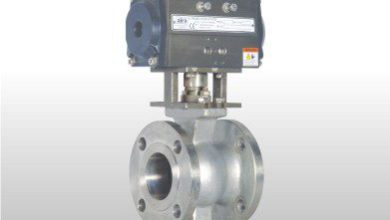A Guide on How to Install Solar Batteries

Battery storage allows you to minimize the overall cost of power in your home, especially during peak hours like the evenings.
You no longer have to rely heavily on electricity from the grid. But before you think of investing in a battery storage system, there are several things you must consider.
Solar batteries come in three major forms including flooded lead-acid cells, lithium-ion cells, and sealed lead-acid cells. Each of these batteries has unique installation requirements and battery room design. That said, here is a solar installer’s guide to help you understand the installation process better.
-
Ensure the installer is accredited and insured
This is probably the first thing you do even before the project begins. Look for a reputable installer and ensure they are accredited by the Clean Energy Council.
The mounting process for a standard system usually takes around 1 to 2 days, and only a qualified installer can achieve this. Likewise, the installer must have public liability insurance to cover any damages that arise.
You may also want to contact your home insurance provider to confirm whether the policy covers your new battery.
-
Have the necessary paperwork
Besides checking whether the installer has the necessary documents, make sure you also receive all the required paperwork including a warranty and a system user manual. You will need these documents if you ever need to make a claim. Also, engage your installer before they leave in case you need clarity.
-
Lithium-ion battery installation
Lithium-ion systems are completely sealed to prevent any leakage. As such, you shouldn’t attempt to touch or dismantle the battery’s interiors. Also, make sure the battery room is cool and well ventilated. The cells should always be in balance both externally and internally.
-
Sealed lead-acid battery installation
Sealed batteries should be installed away from any appliances or electrical equipment since they release flammable gas when overheated. You should place a vent on top of the battery enclosure so that the flammable fumes can escape. Also, provide adequate cooling and ventilation to keep the system safe. Place the cells at least one inch apart. Likewise, keep the battery case away from any adhesive materials or organic solvents.
-
Flooded lead-acid battery installation
Wear protective gloves when handling a flooded lead-acid battery to prevent possible contact with the battery electrolyte. But in case of any acid spills, use baking soda to neutralize it.
Hydrogen gas may build up when overheated so you should make sure the gadget is well ventilated as well. Battery interconnects should be crimped with UL-listed terminal lugs based on the manufacturer’s guidelines.
Lastly, always fasten the battery bank securely and use shock-absorbent materials if the system is exposed to vibrations.
-
Connect to the grid
Once the installation is done the cells are then connected to the solar system. The installer may need to switch on your home’s power supply to see whether everything is working as intended. Read more here https://www.electricaltechnology.org/2013/05/a-complete-note-on-solar-panel.html
Safety tips
Just like any other electrical equipment, proper safety should be taken when mounting a solar battery. Here are some of the safety tips you should consider before working with batteries.
- Avoid short-circuiting battery-short circuiting occurs when a positive terminal is connected to a negative terminal. These could be caused by Improper wiring or when a metal object is placed on the battery terminal. To avoid this, use insulated gears.
- Always wear protective gear like gloves and safety goggles when working.
- Wrap your hair properly when handling cells and avoid wearing anything that could get stuck on the terminals or wires. This also includes all metallic jewelry like rings and watches.
- Keep all wires away from sharp objects to avoid damaging them.
- All wires must be terminated or stripped properly with a wrench or torque when need be.
- Always have a functional multimeter with you to verify polarity and voltage in conductors.
Conclusion
We hope this guide has helped you get a clear insight into what the solar battery installation process involves. Although the process might seem complex, the advantages of using battery storage are many in the long run. It is also evident that each stage of installation is different with its unique challenges. As such, we recommend working with a professional to minimize probable hazards.





